Sculptor Frank Antone Martin was a plaster pattern maker for the aircraft industry, based in Inglewood, California. He'd dreamed of placing a giant, steel-reinforced concrete statue of Jesus perched over the rim of the Grand Canyon—and even went so far as to make it.
From a poem Martin wrote about the project (yes, he was a poet, too):
He fashioned an object of concrete and steel
To staunchly present his conviction and zeal;
The model he chose was the great Prince of Peace
Just standing there bidding all hatreds to cease.
Unfortunately, officials in charge of the Grand Canyon told him they didn't accept works from out-of-state artists.
Martin offered the statue to other venues, like Forest Lawn, which also turned him down. He started calling his monolithic Jesus figure "The Unwanted Christ."
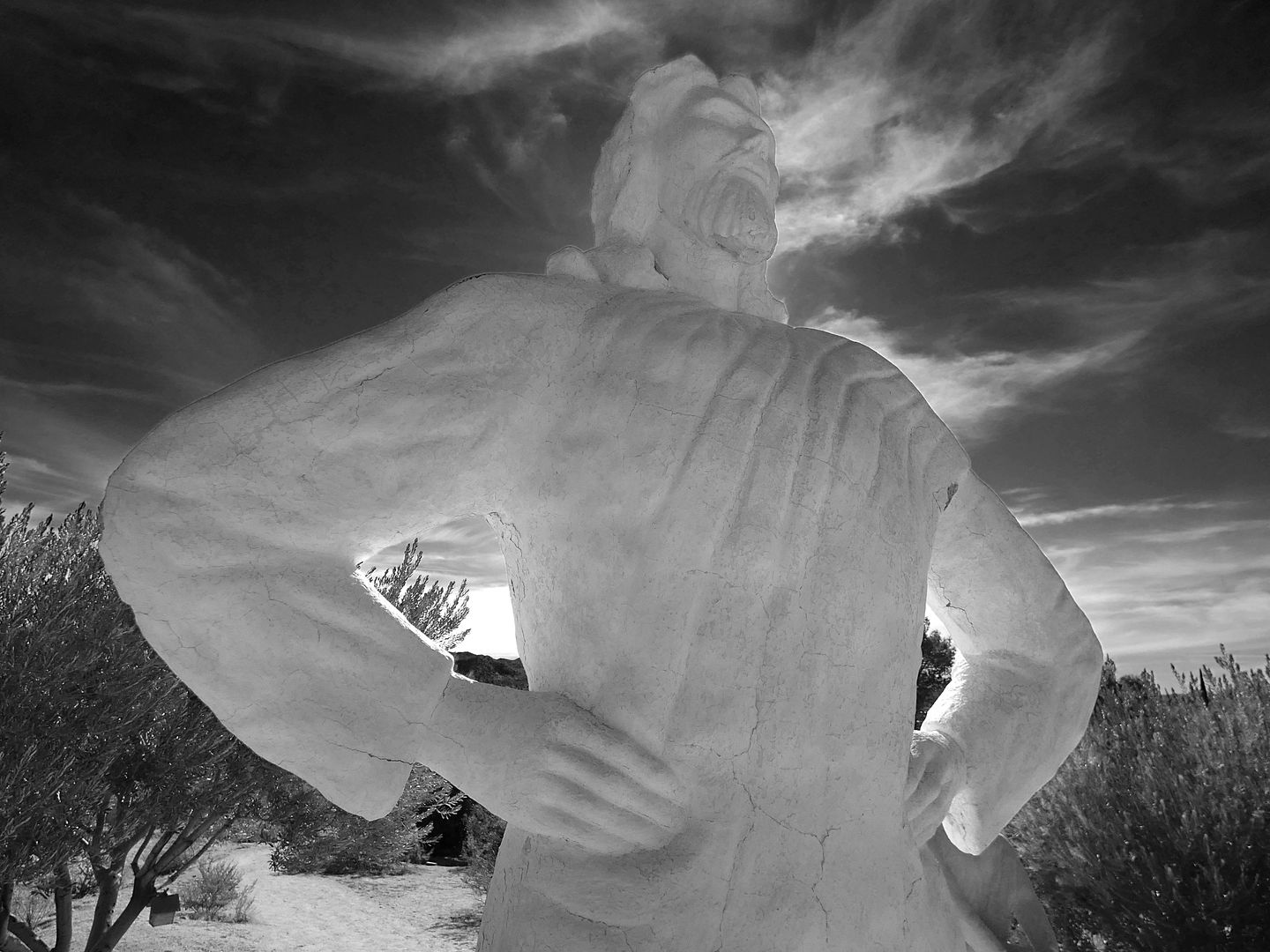
But in 1951, Reverend Eddie Garver of the Yucca Valley Community Church offered to bring it to California's High Desert...
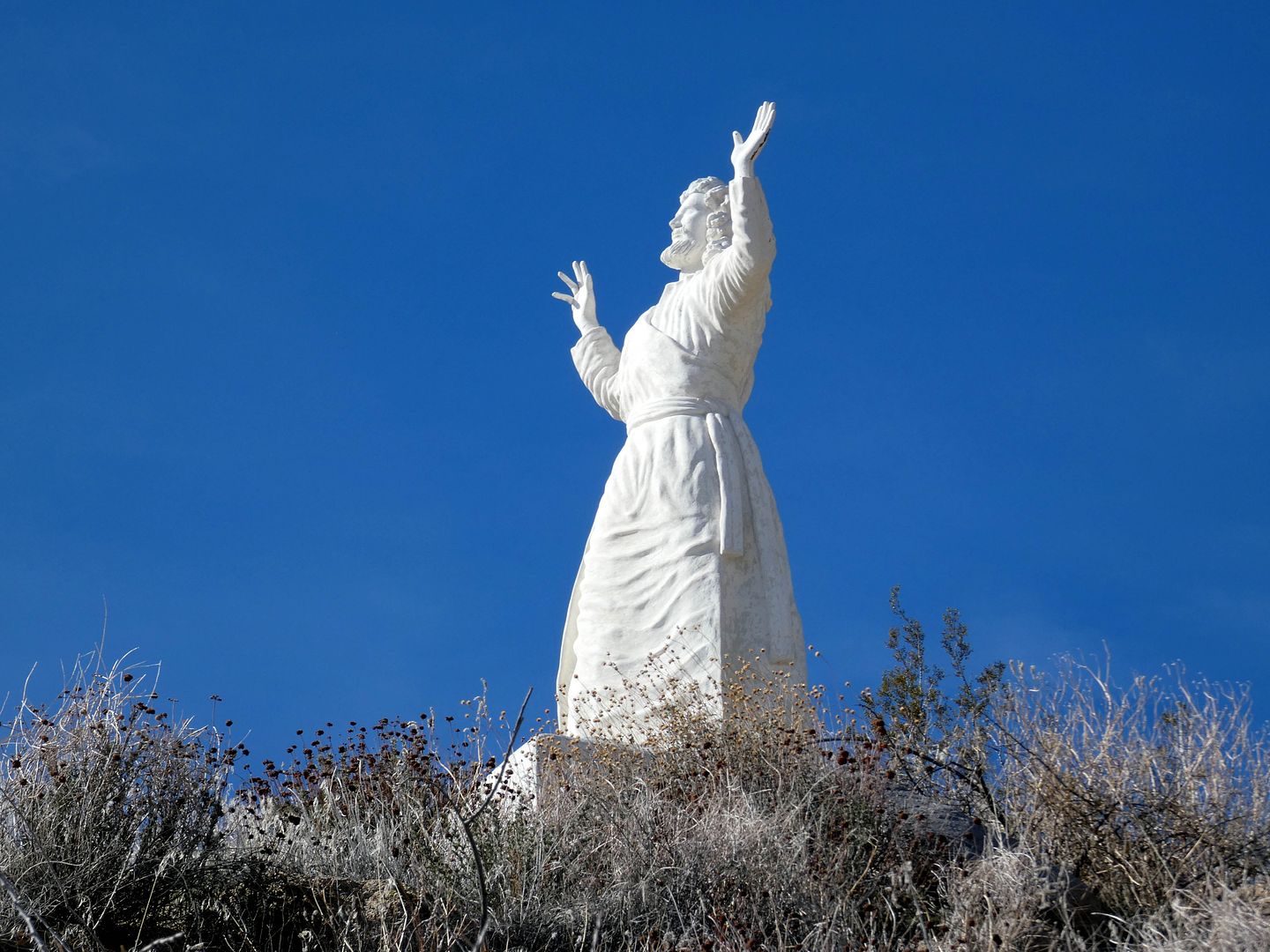
The Ascension
...where it would be placed atop a hill (not exactly the Grand Canyon, but something) for all to see as part of a biblical theme park (above).
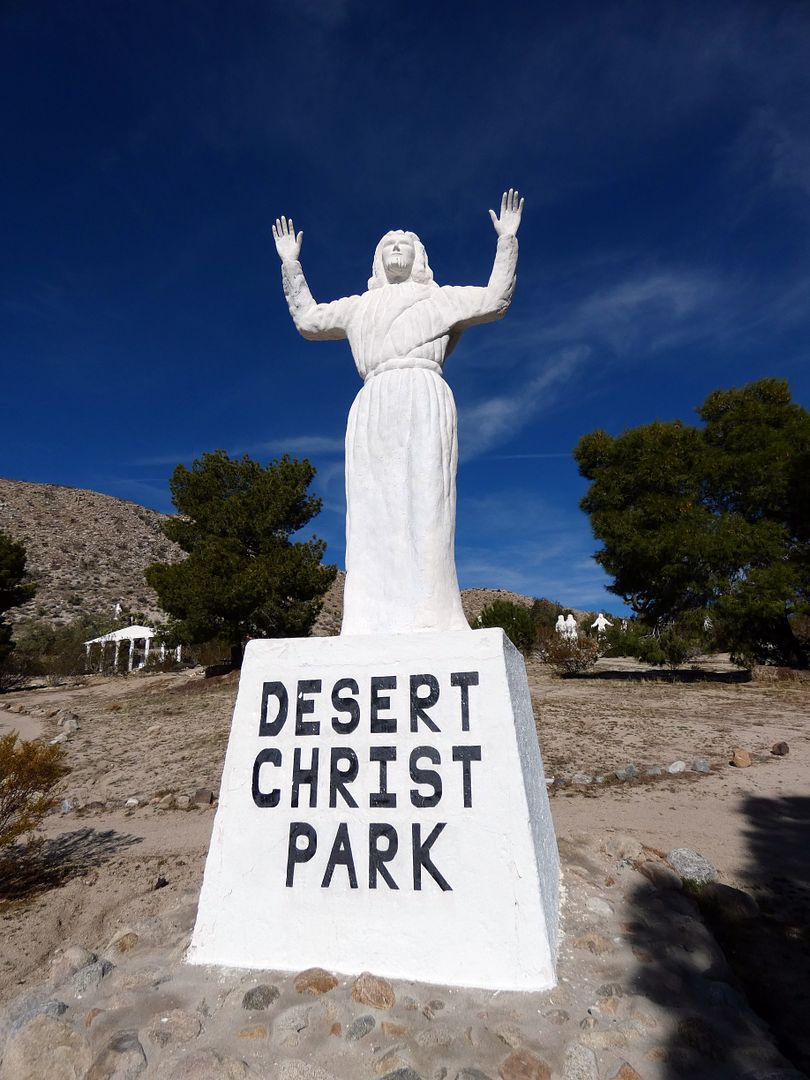
Over the next 10 years, more statues followed, which were eventually arranged into an outdoor sculpture garden. The statues have been preserved and are now open for public viewing as part of Desert Christ Park.
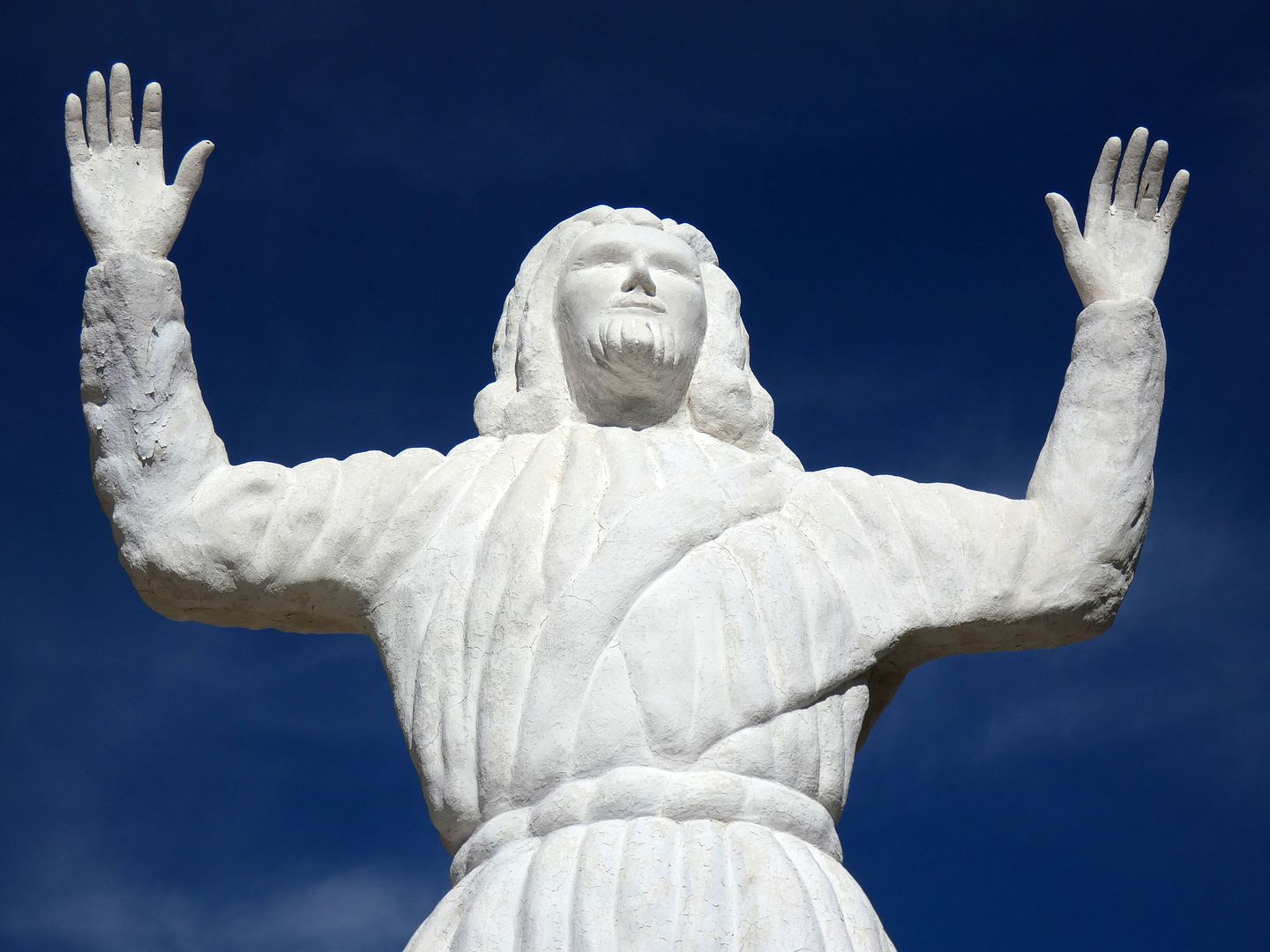
Again, in Martin's own words:
More objects were added to dot the hillside
And strengthen the message that peace must abide
Peter, Judas, the whole gang who'd attended the Christ Blessing All Mankind (above) and The Last Supper (below).
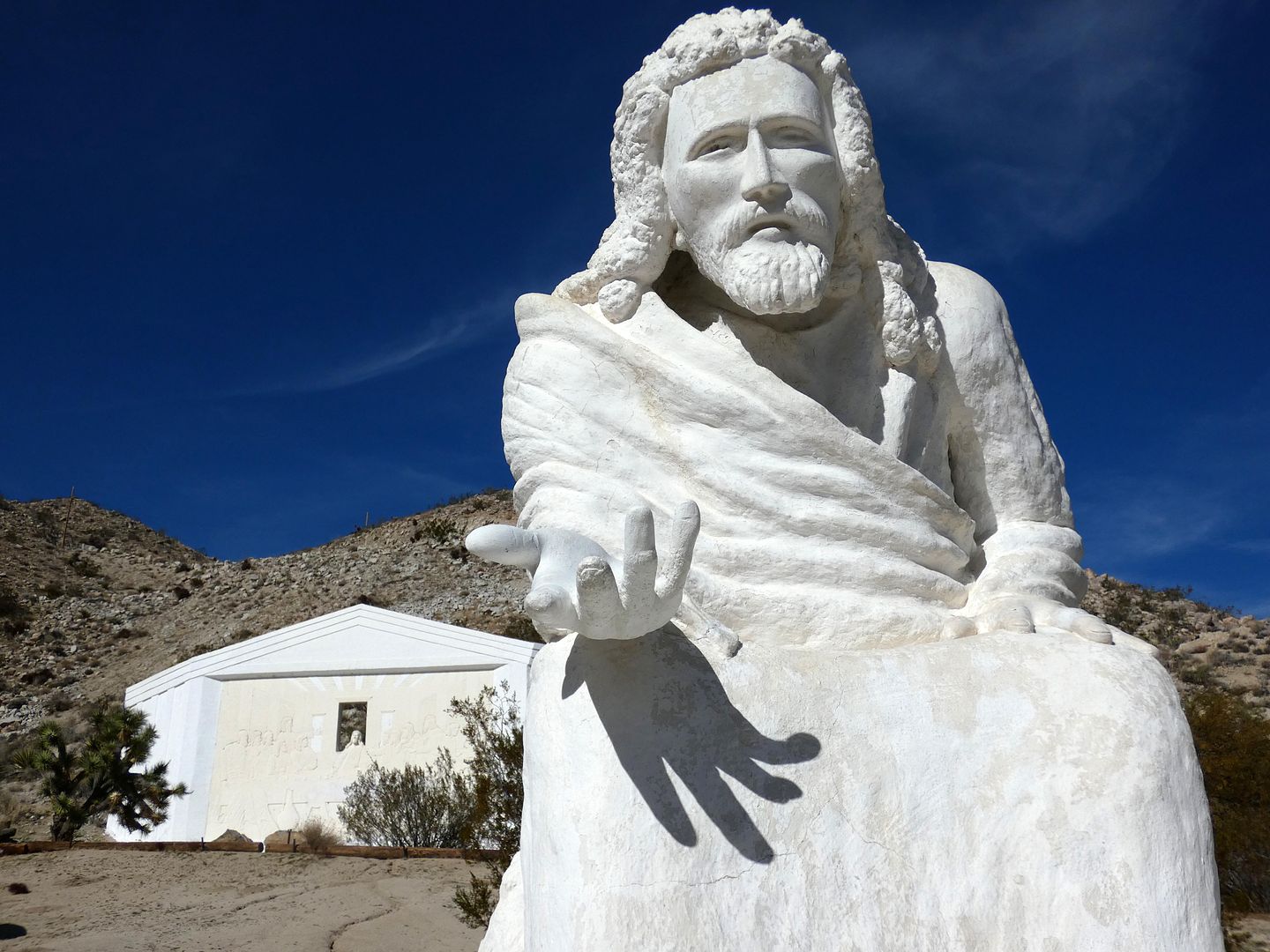
But Martin died in 1961 before all of the sculptures could be completed.
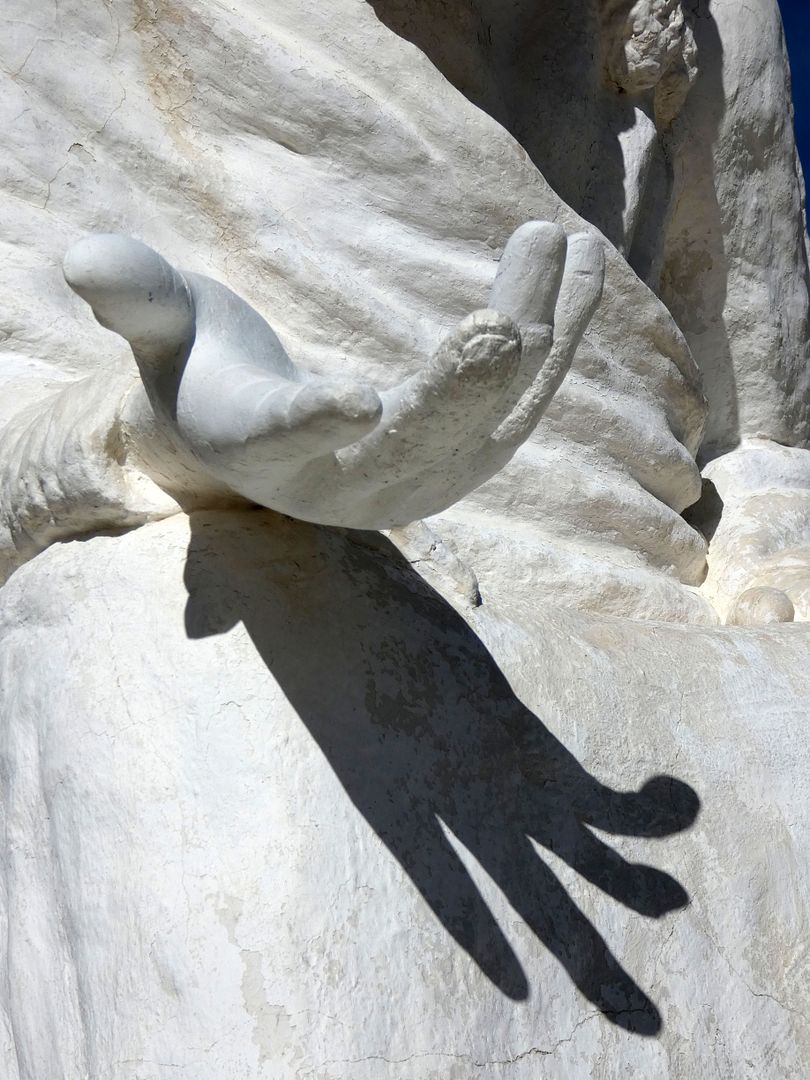
When I visited back in 2012, they were in such horrible condition, I thought they'd eventually succumb to the elements. The 1992 Landers earthquake had done a lot of damage.
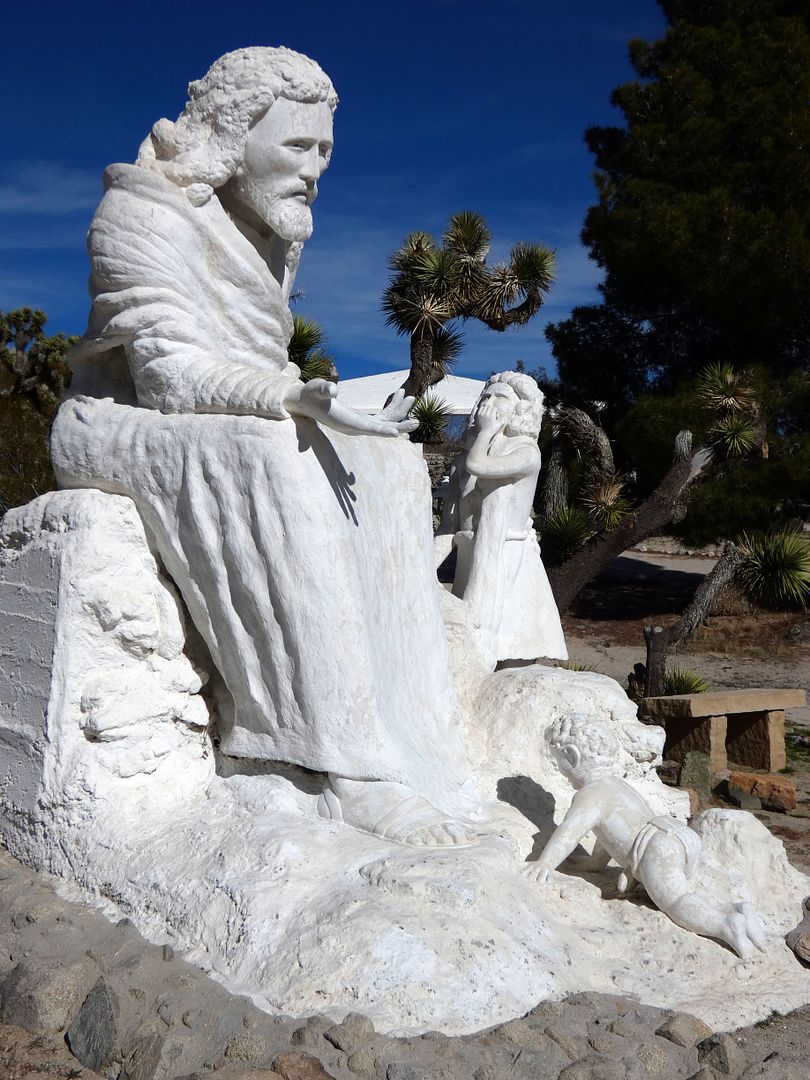
Most of the statues' hands (like that of the Blessing the Children) were cracked, paint peeling, concrete crumbling and rebar rusting, as other statues looked on in horror.
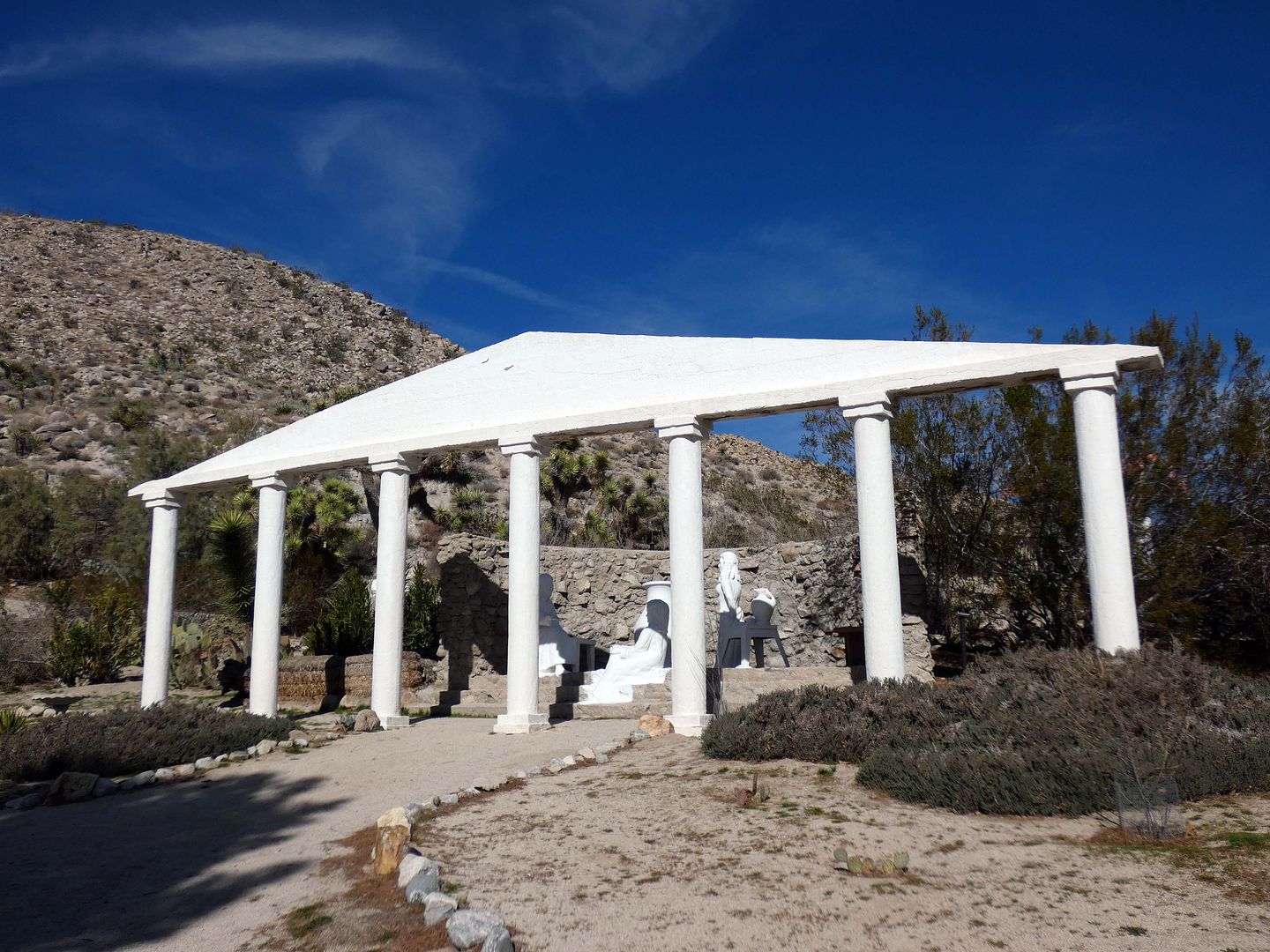
Mary and Martha Talking With Jesus About Lazarus
But a restoration effort that began in 2018 has not only stabilized their condition, but also restored some missing pieces.
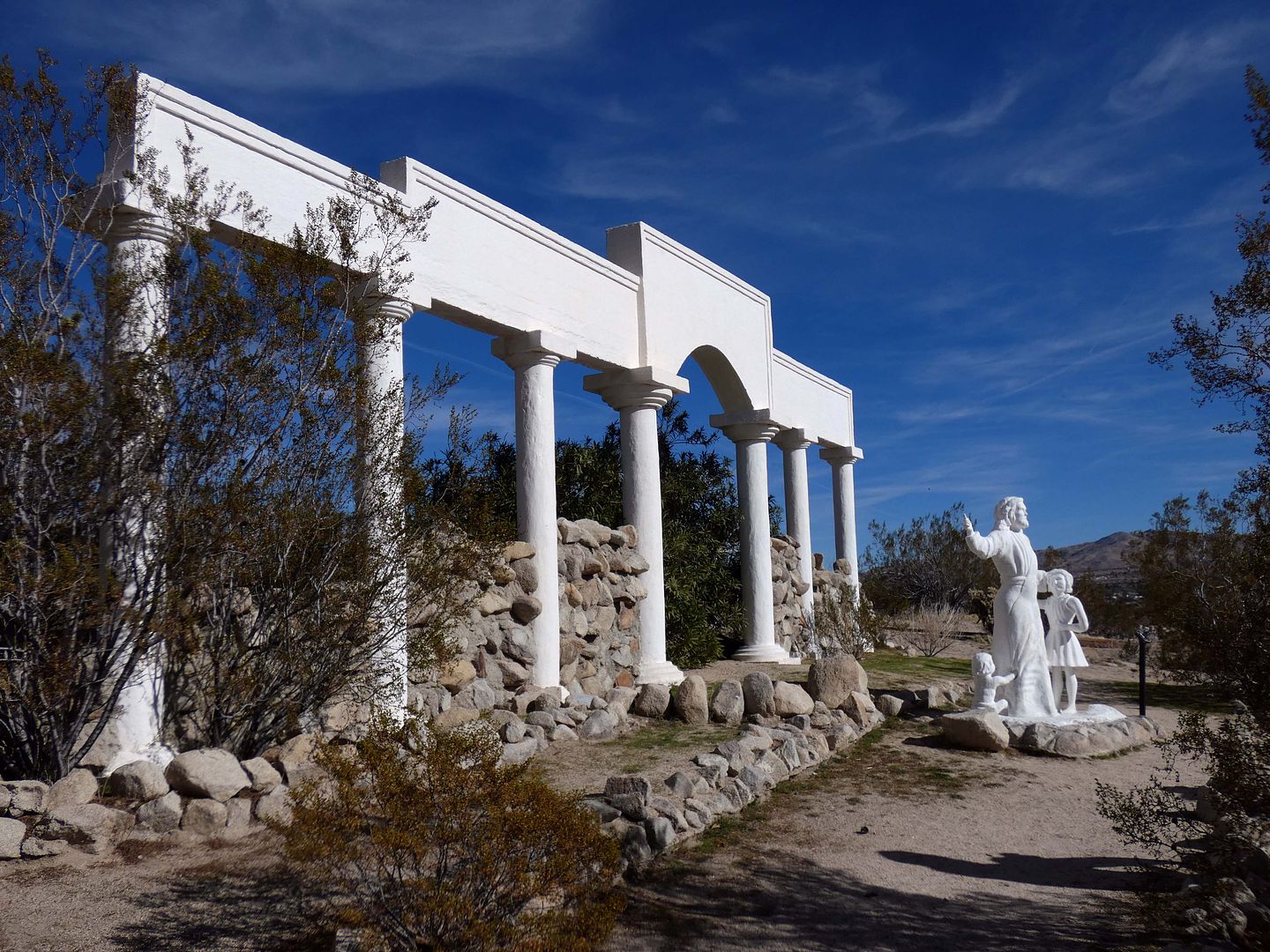
The scenes feel much more complete now...

...like Let the Children Come to Me (from Matthew 19:14).

Today, the stated mission of Desert Christ Park is "to provide a desert sculpture garden of hope, prayer and beauty by sharing the Peace of Christ through art."
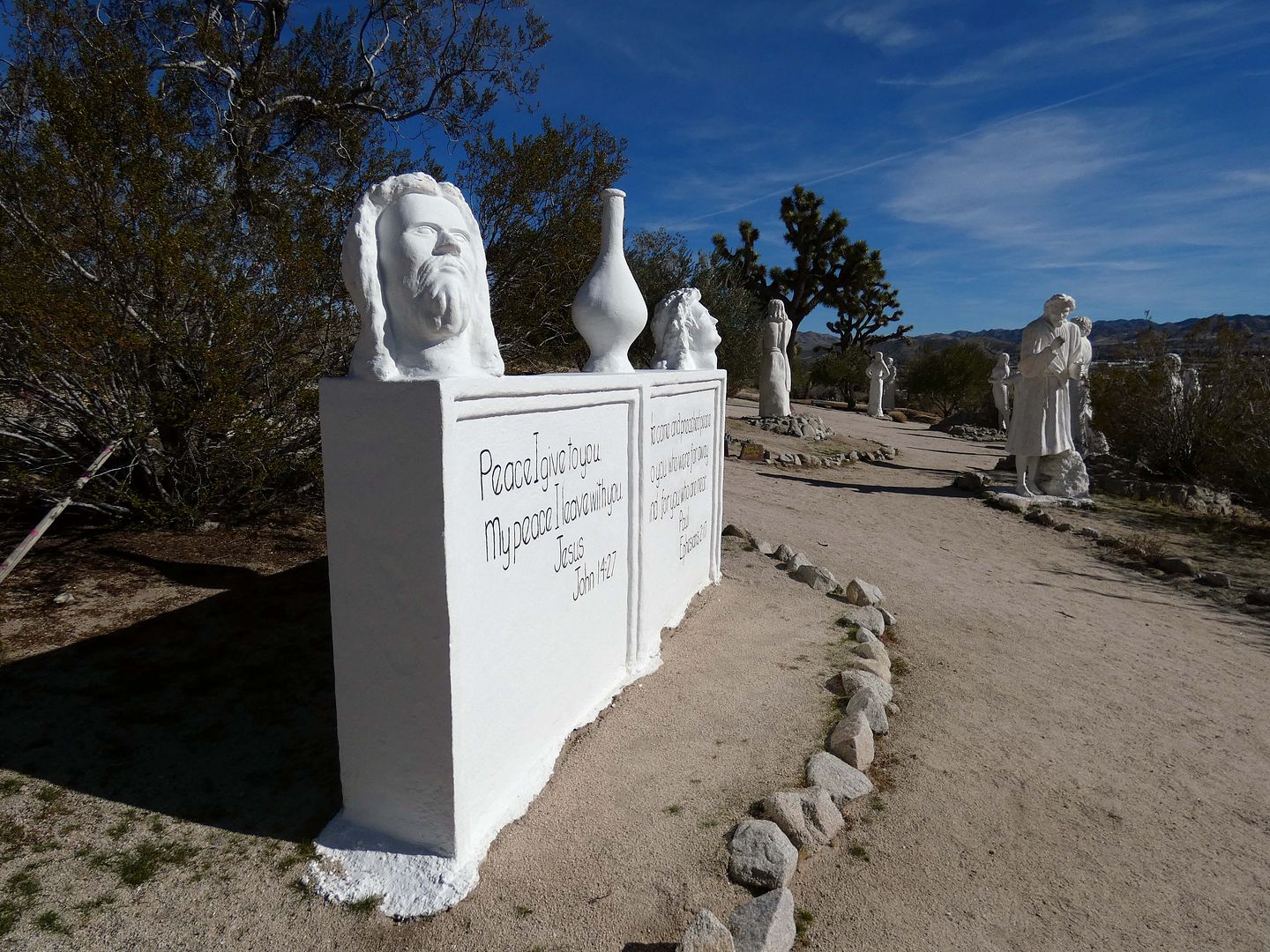
There are so many versions of Jesus depicted here, from the Garden of Gethsemane and Praying in the Garden to Peace Wall...
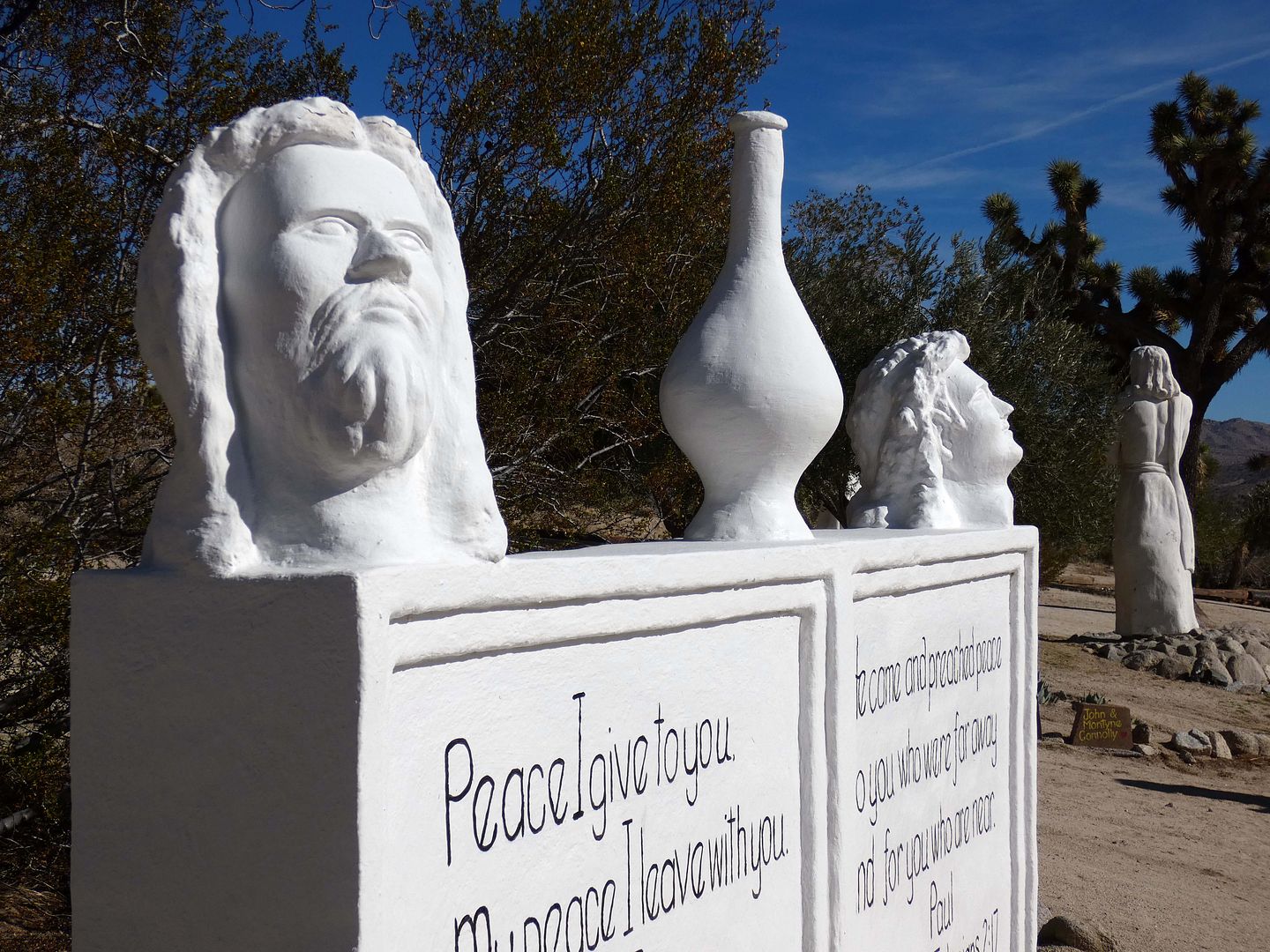
...which quotes the scripture "Peace I give to you; My peace I leave with you" from John 14:27.
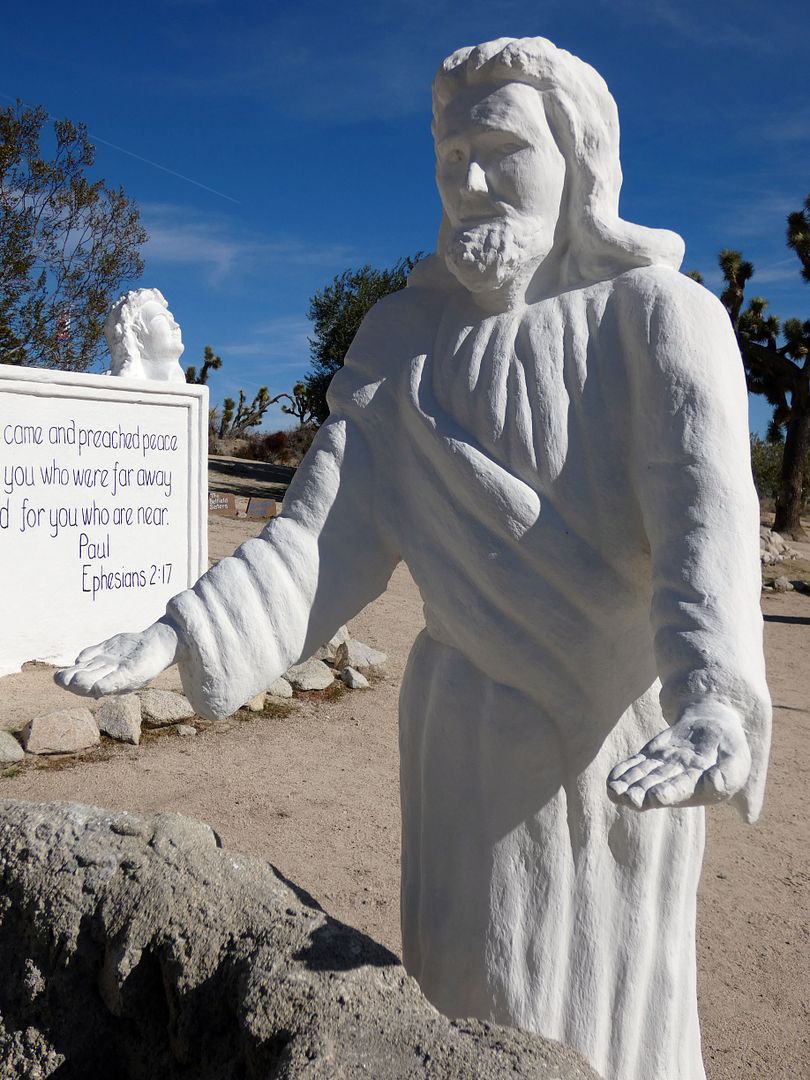
There's also Jesus with the Samaritan woman at the well...
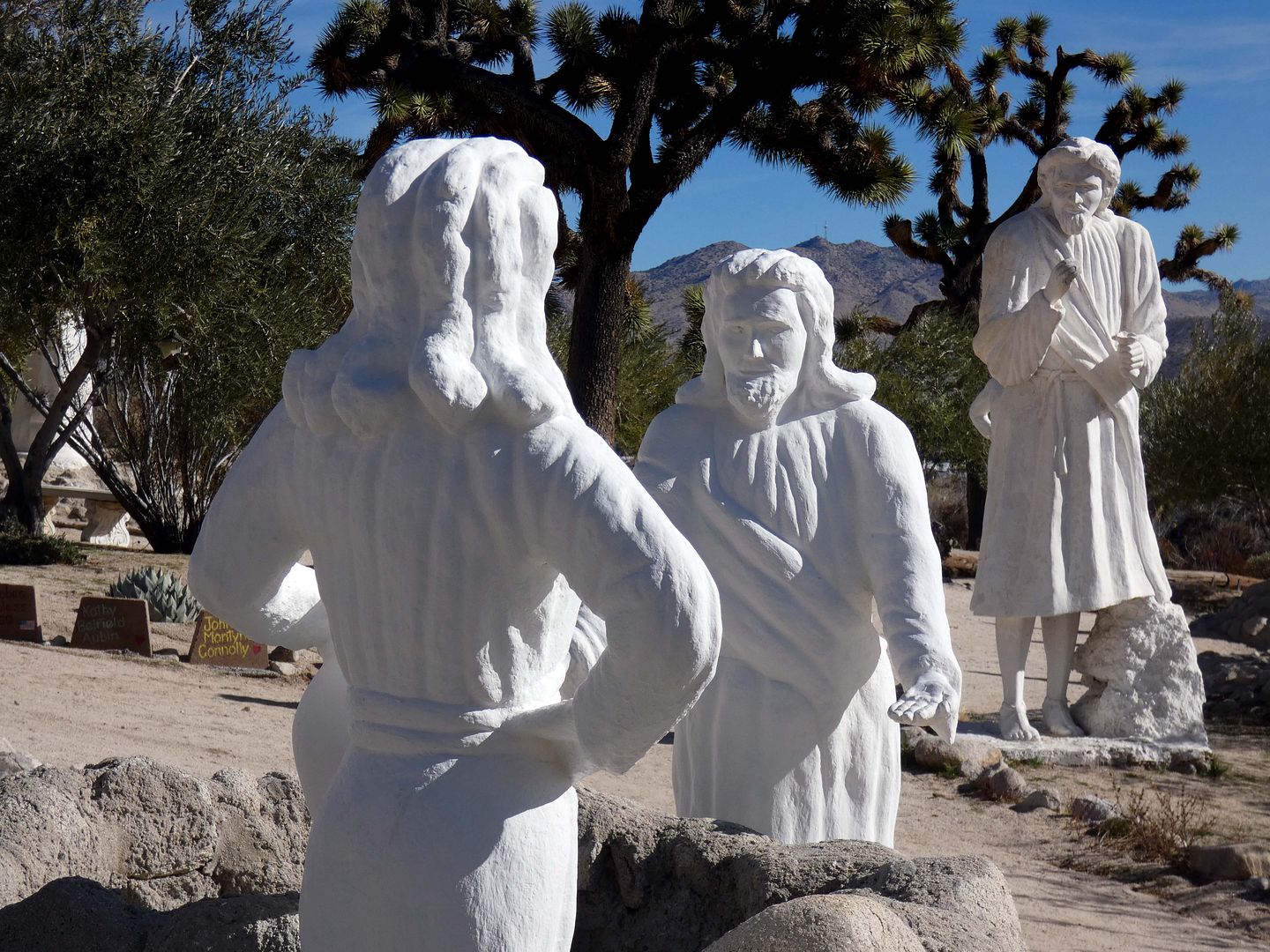
...from John 4:1-42...
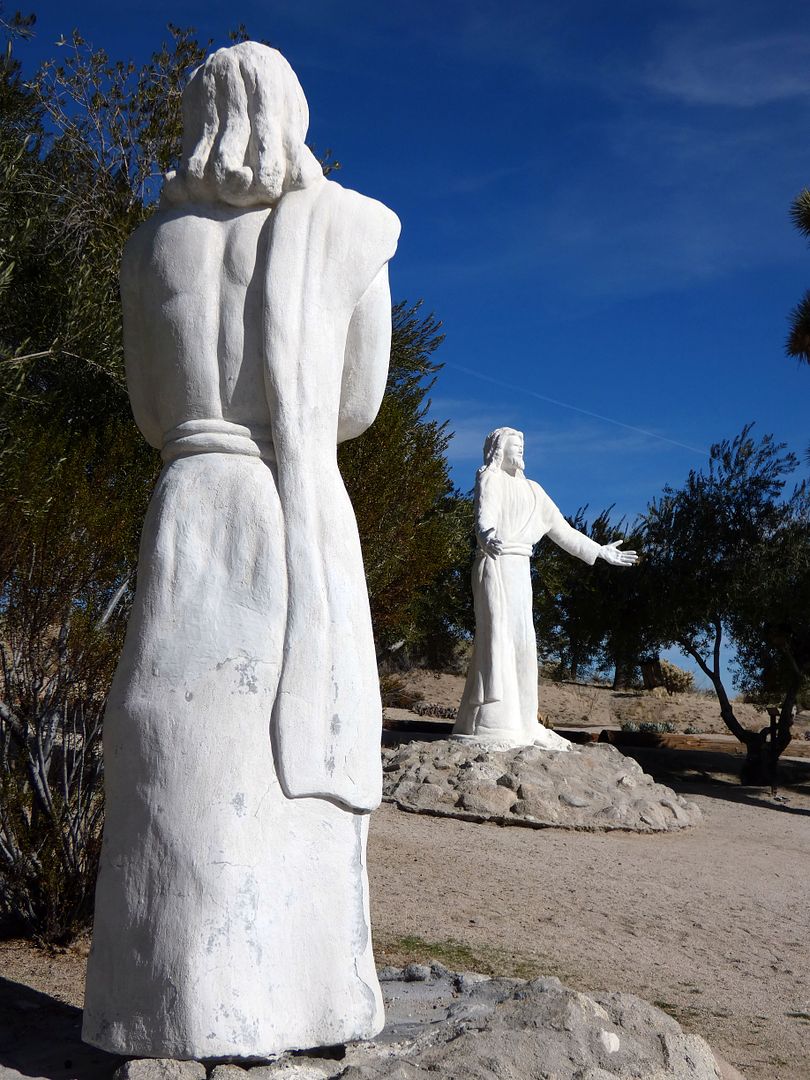
...and the Jesus from the Sermon on the Mount from the Gospel of Matthew.
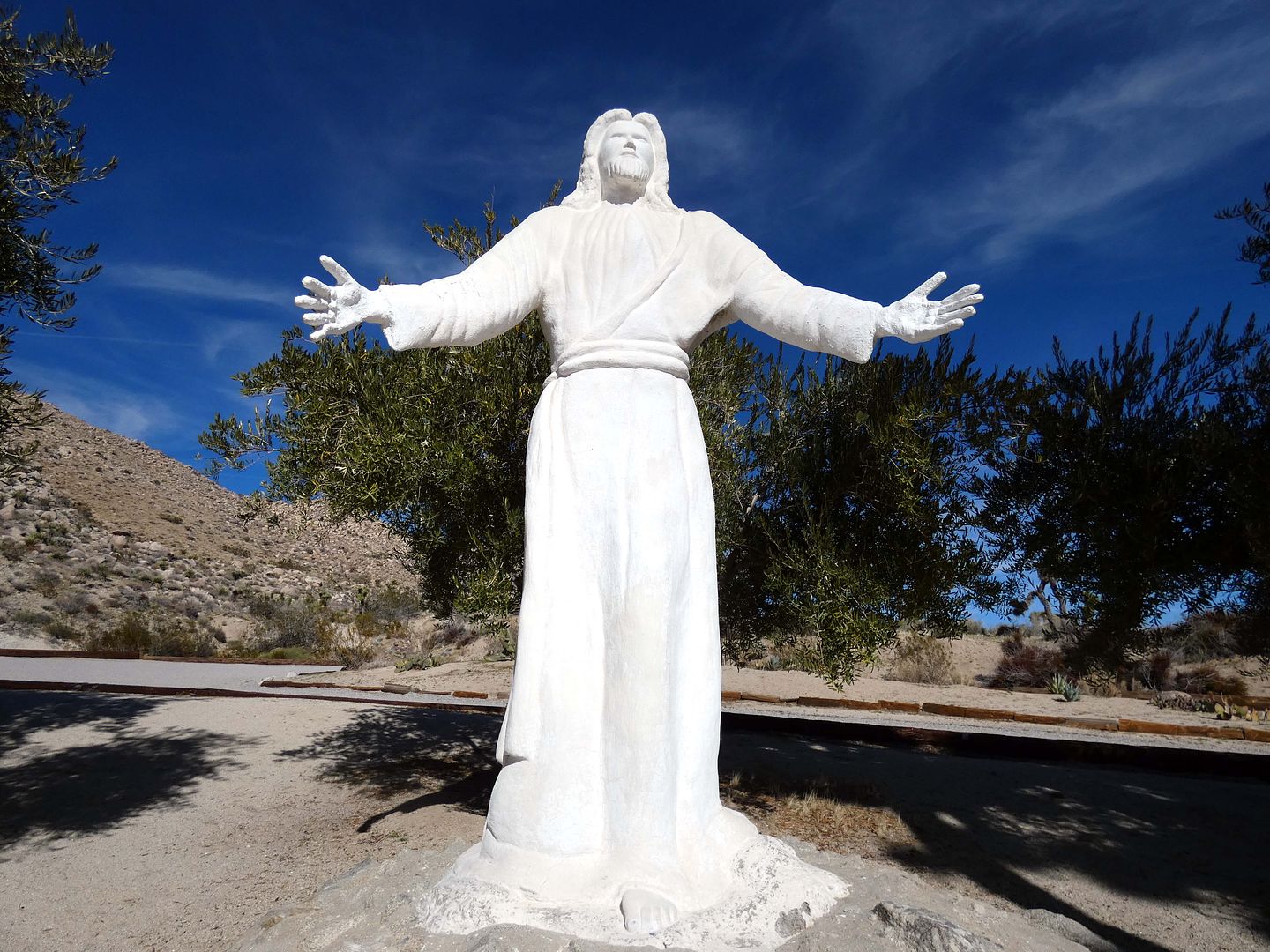
That's probably the prototypical image of Jesus, arms outstretched...
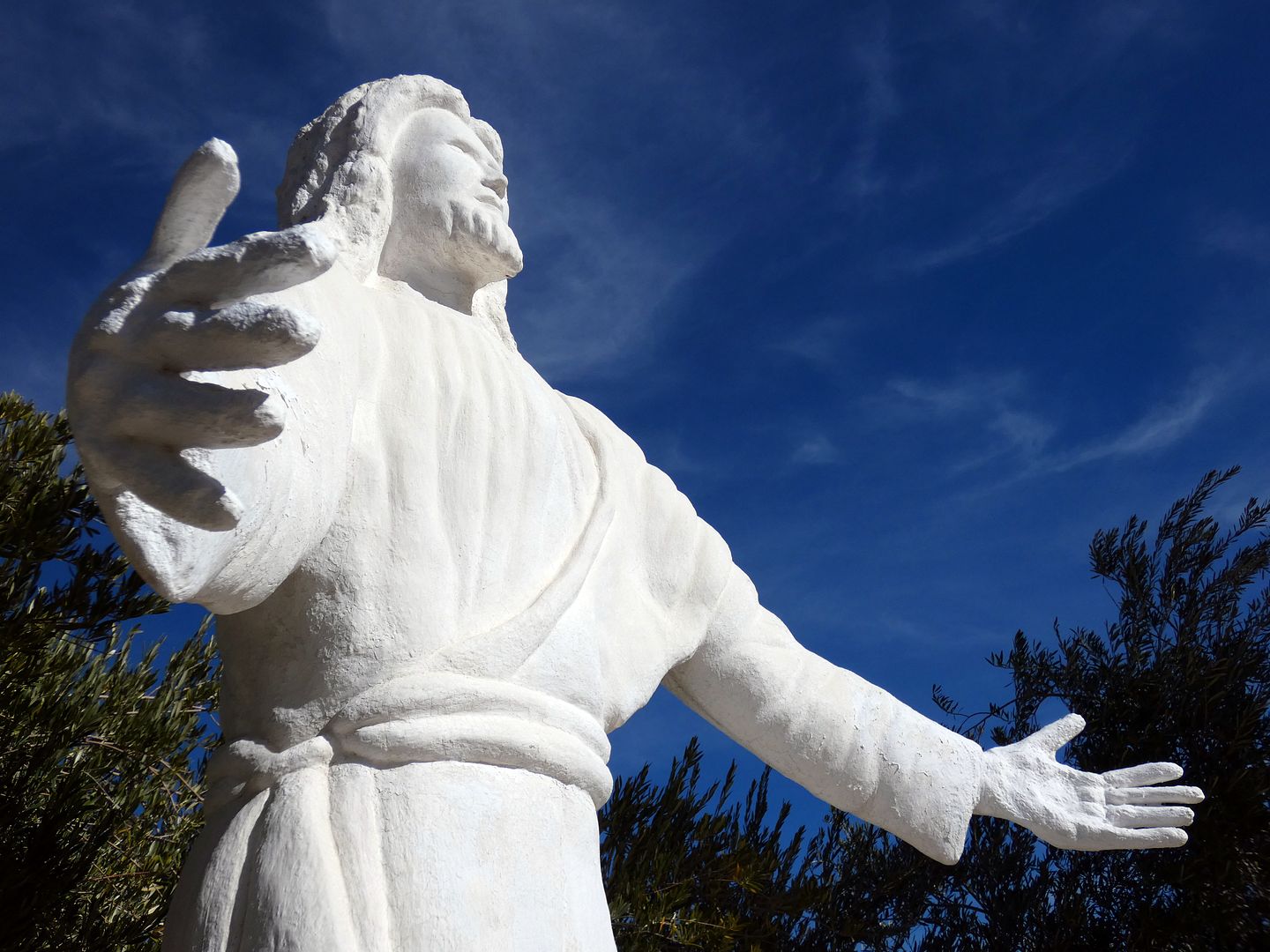
...just like the giant Christ that towers over Tijuana, and the famous Christ the Redeemer statue in Rio de Janeiro, Brazil.
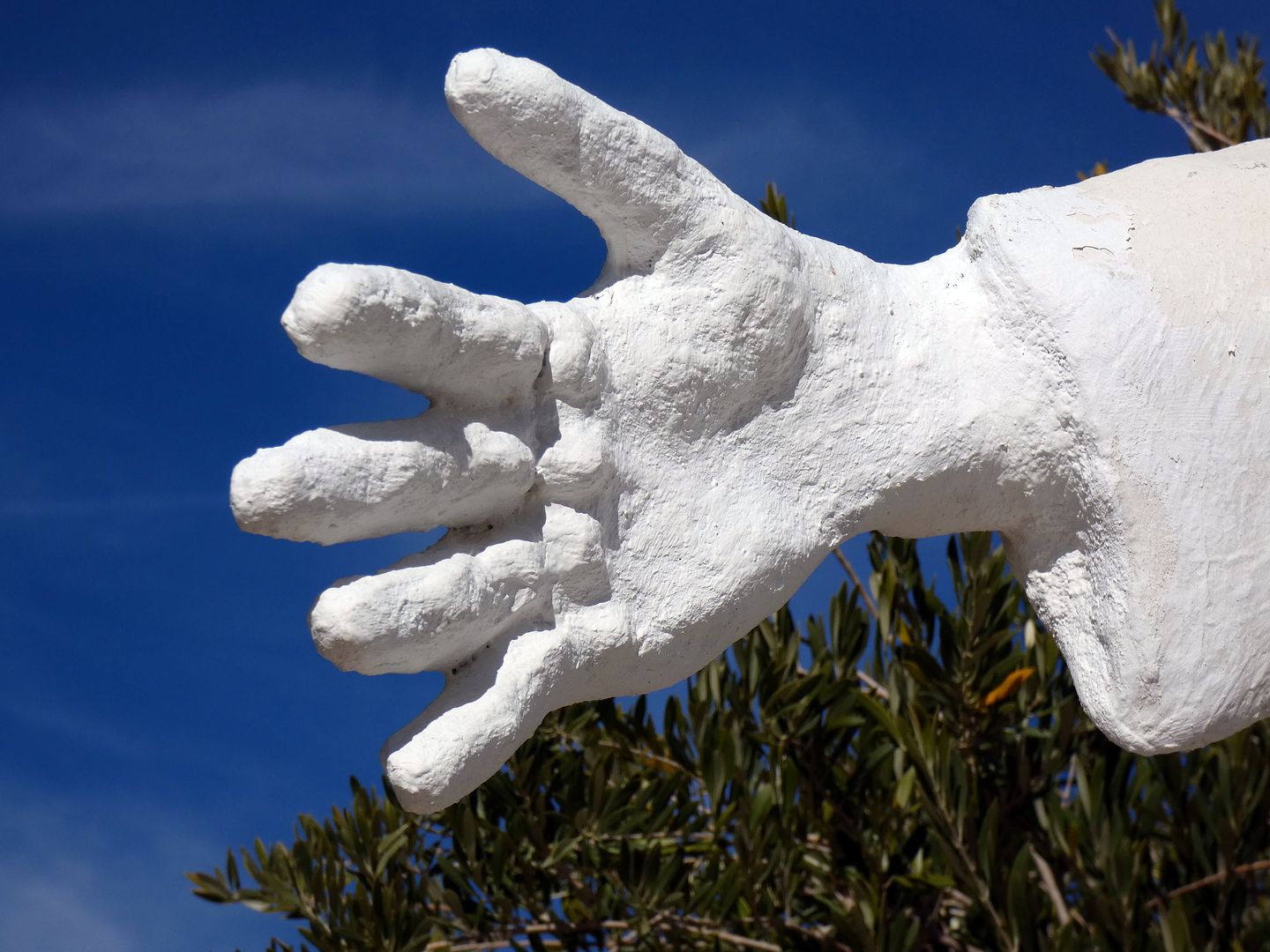
This one is a little more rough-hewn, especially compared to the statuary found in cathedrals throughout the world...
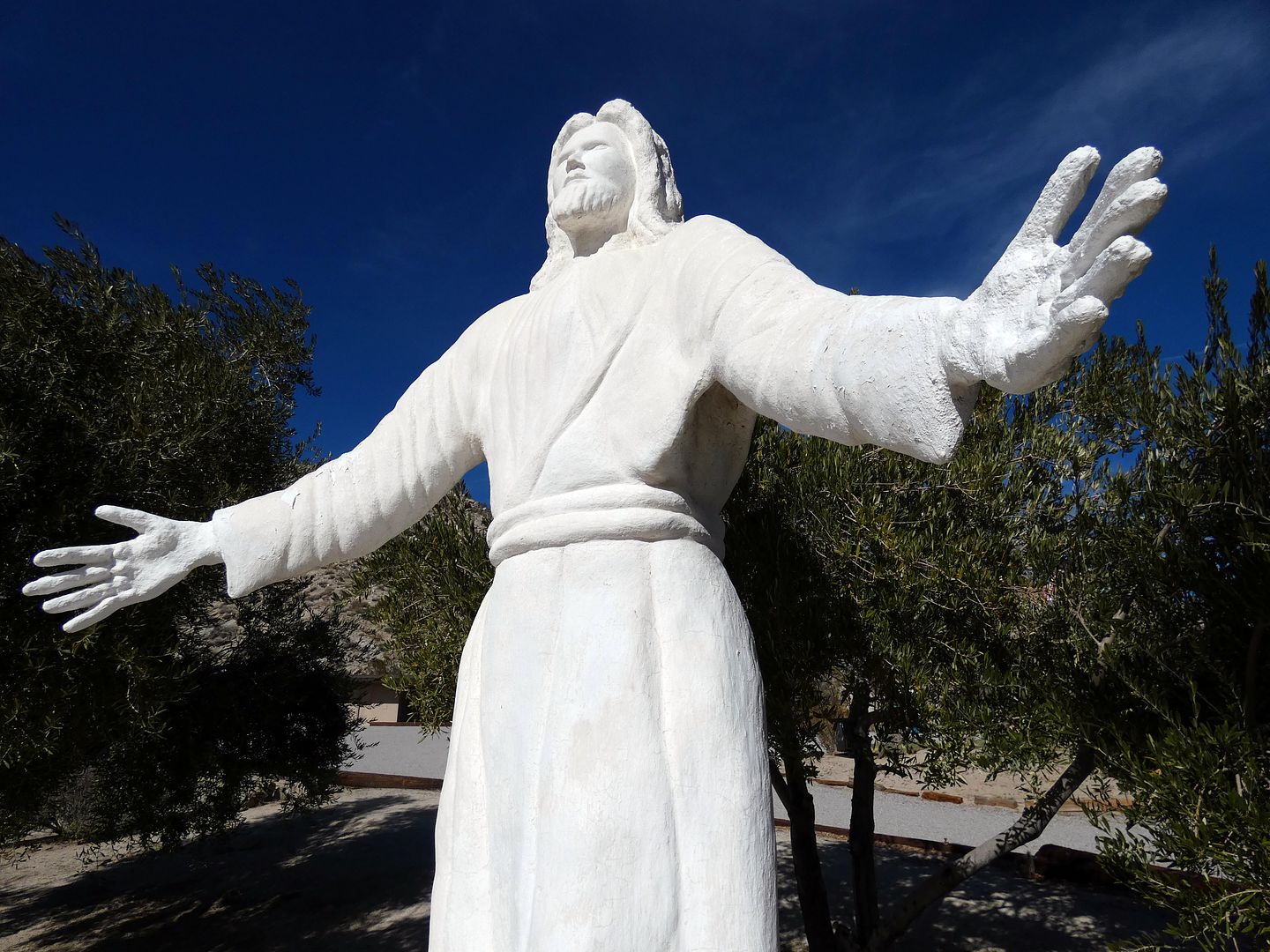
...made of more high-brow materials like imported marble.

That makes this park a little more accessible than a place of worship...
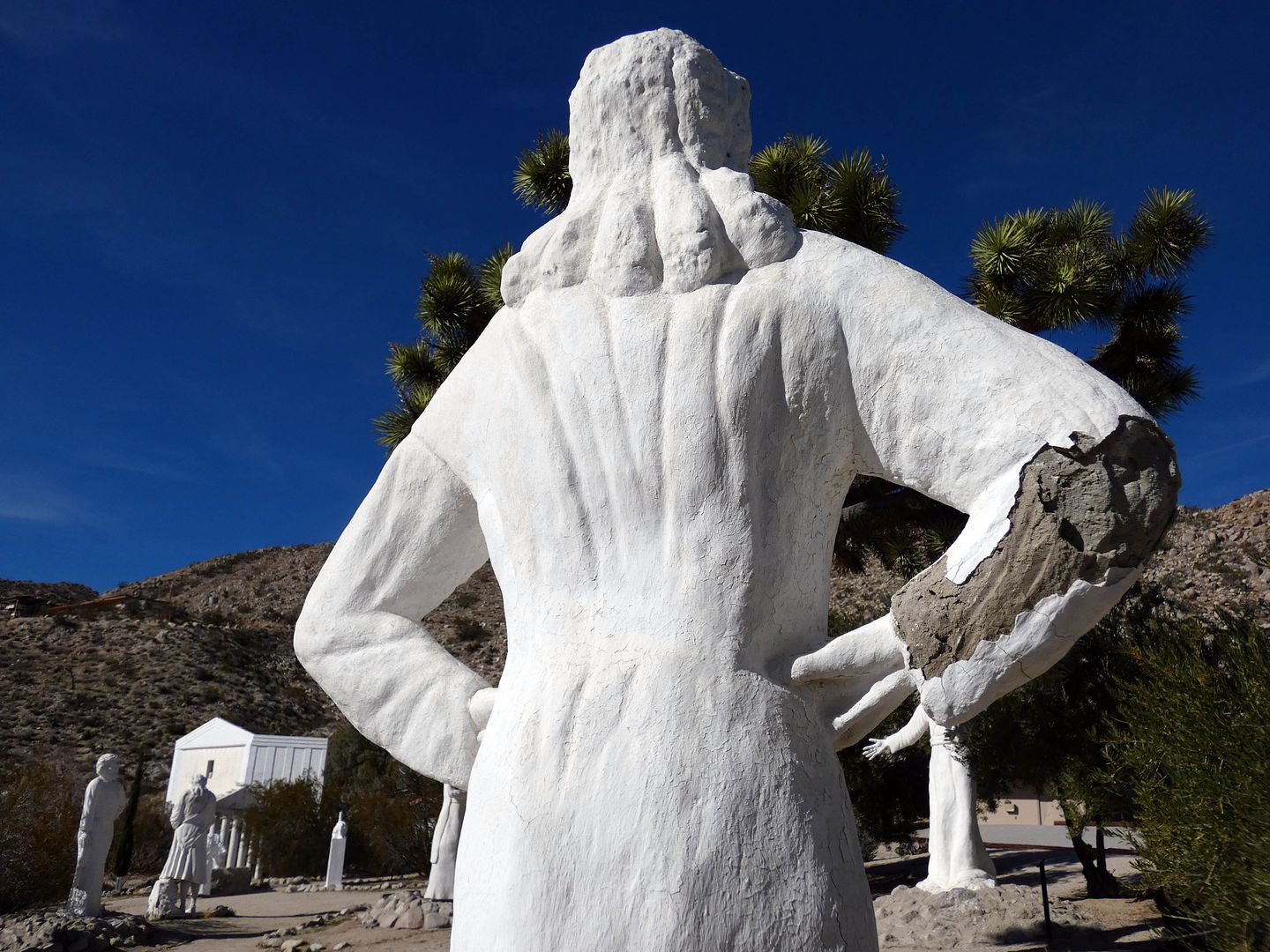
...especially as it still shows some of its weaknesses. 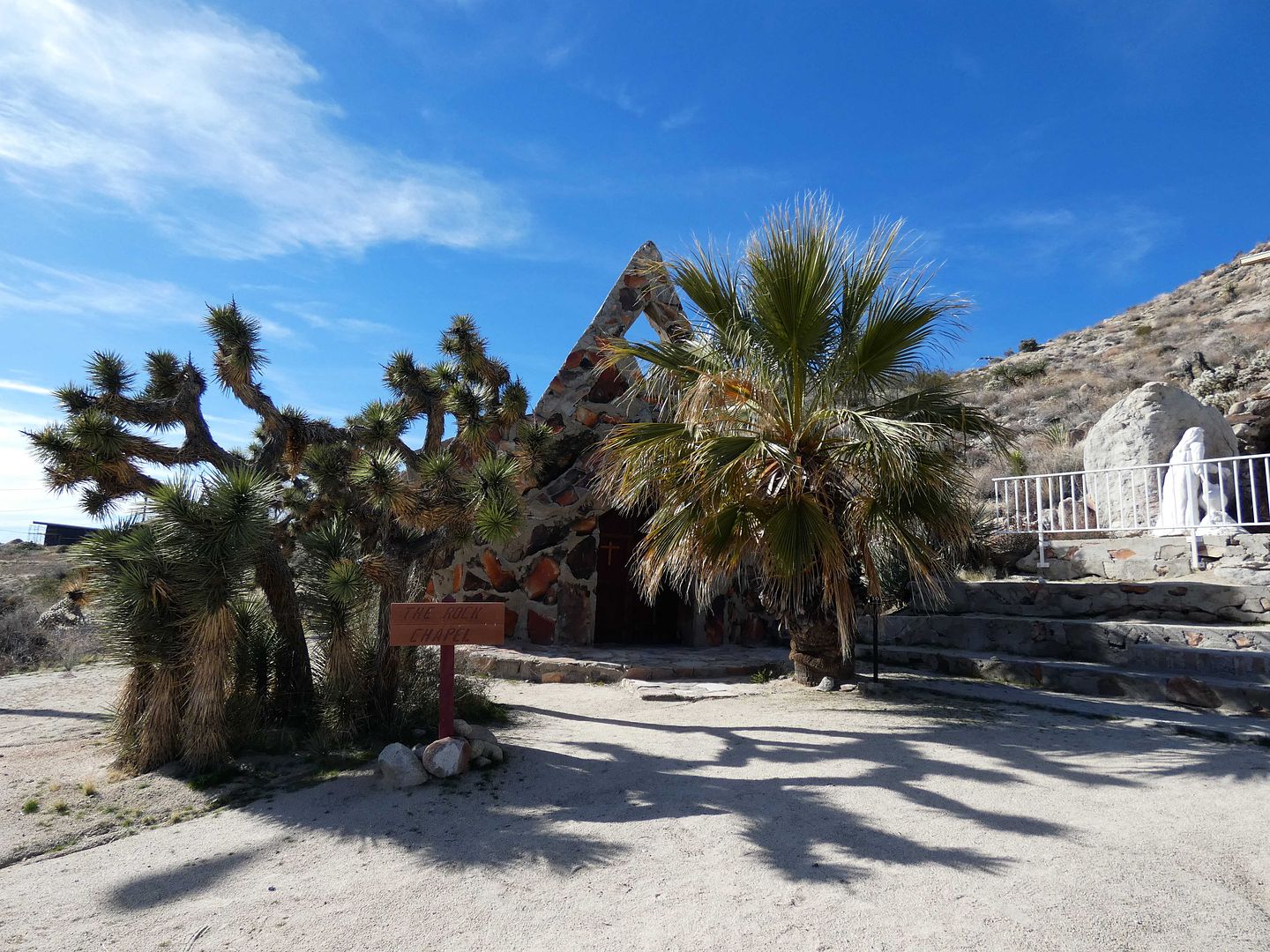

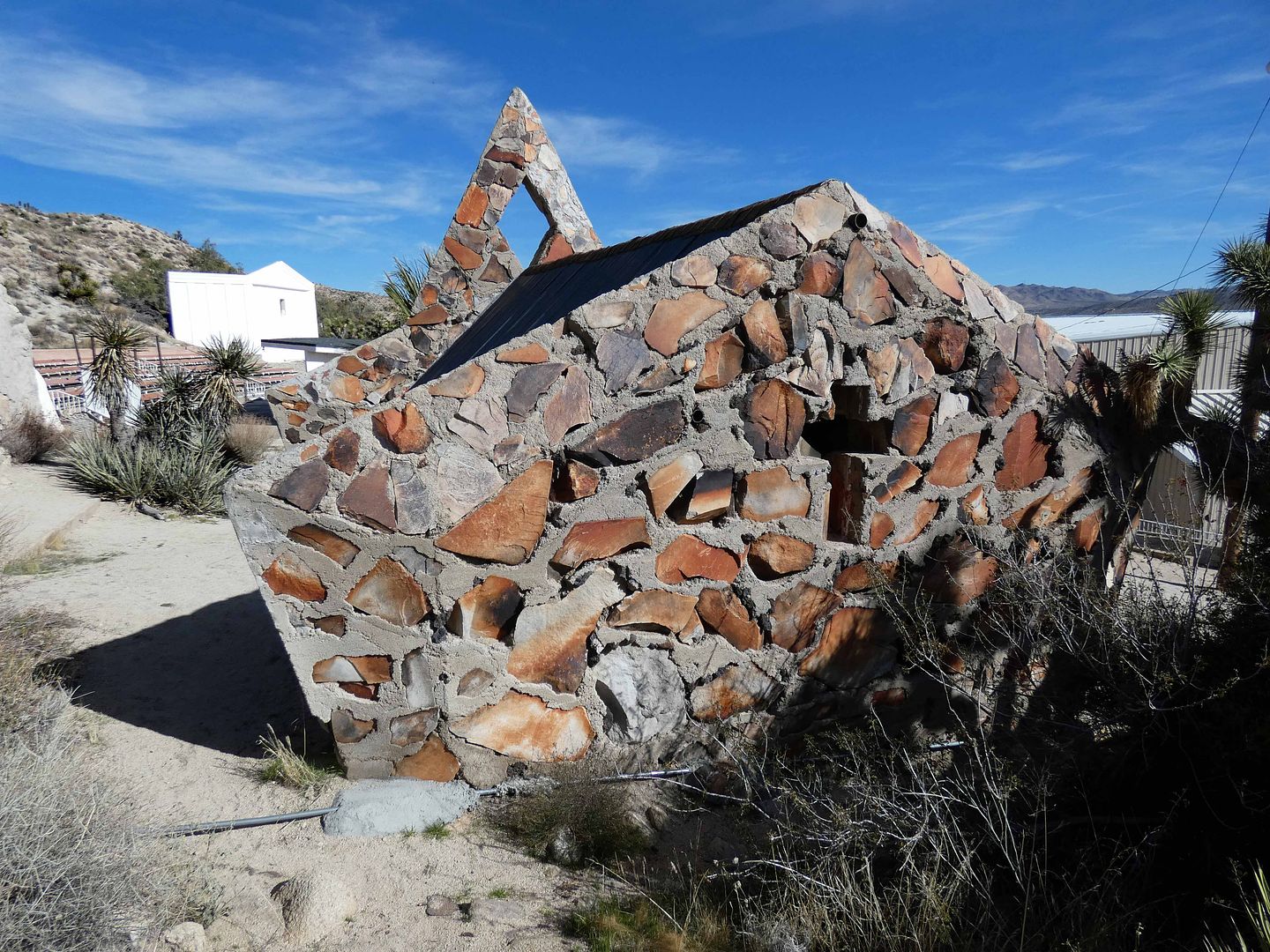

Of course, the sculpture garden actually has its own house of worship—the Rock Chapel, built in 1954 "...for those who would wed/To make it impressive when 'I do's' are said." (The palm tree out front was planted in 1957.)

Between 1954 and 1959, records show that 32 weddings took place here—though unfortunately the Living Hope Church now has to keep it locked to keep out the vandals, only opening it by appointment.

I hadn't even seen the chapel upon my first visit—and now that I've been three times, I'm always finding something new.
Long may it last.
Related Posts:

No comments:
Post a Comment